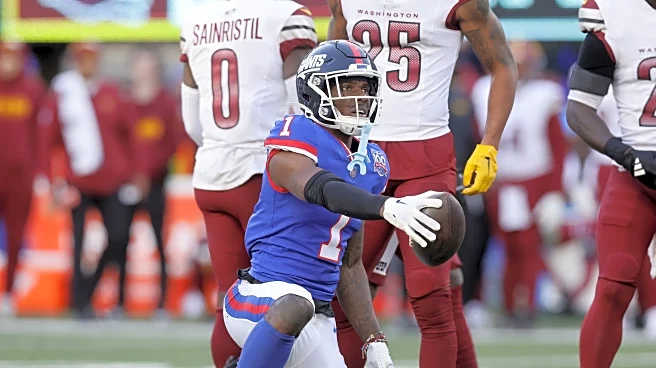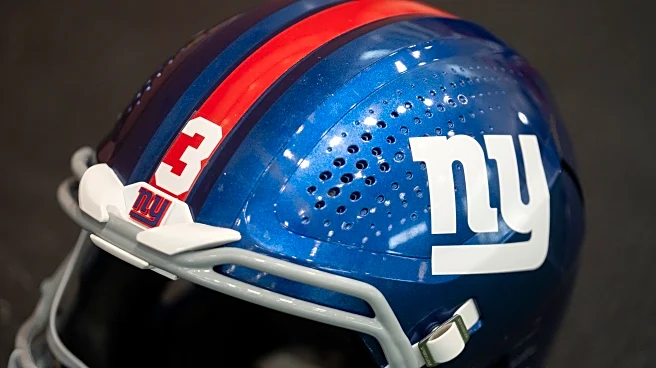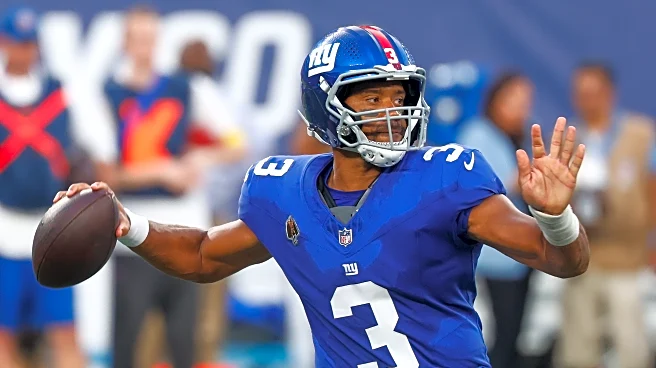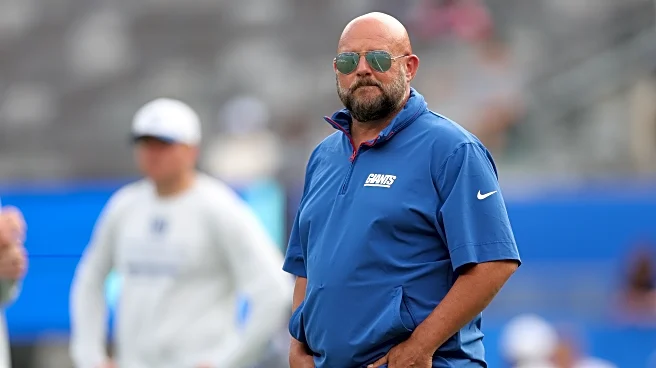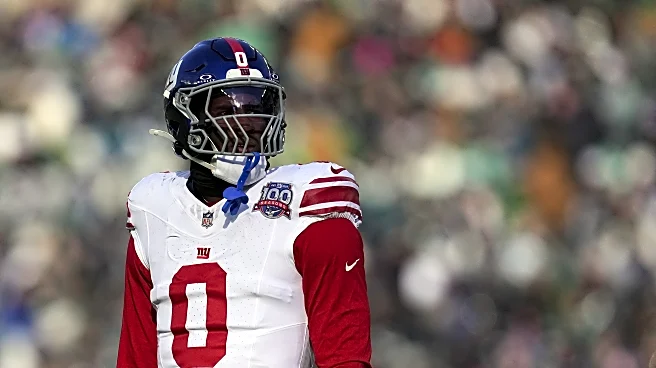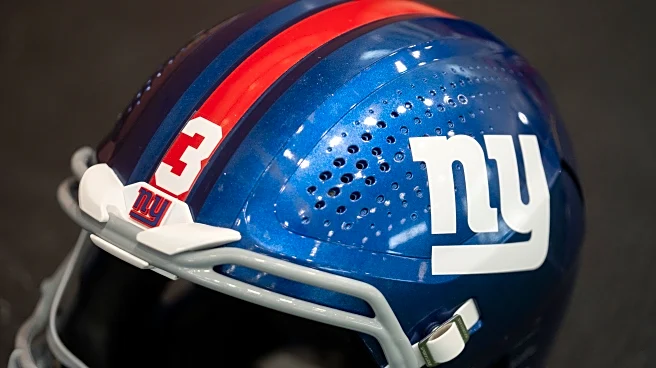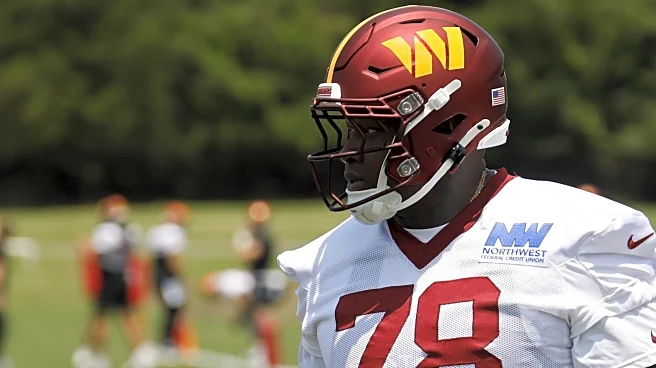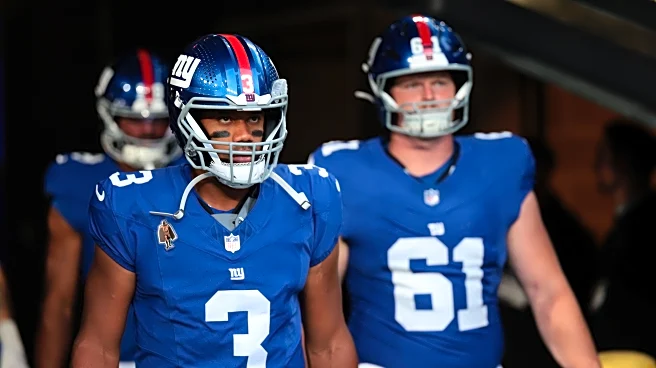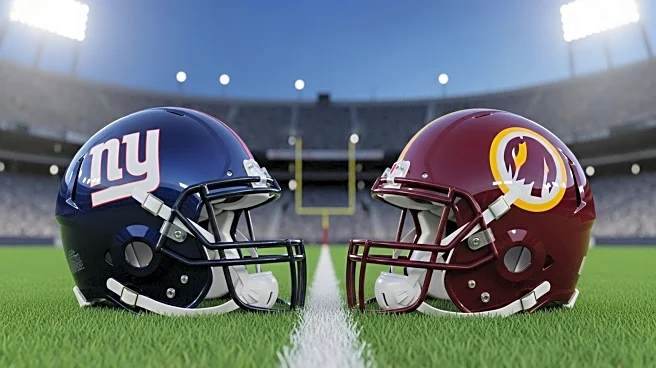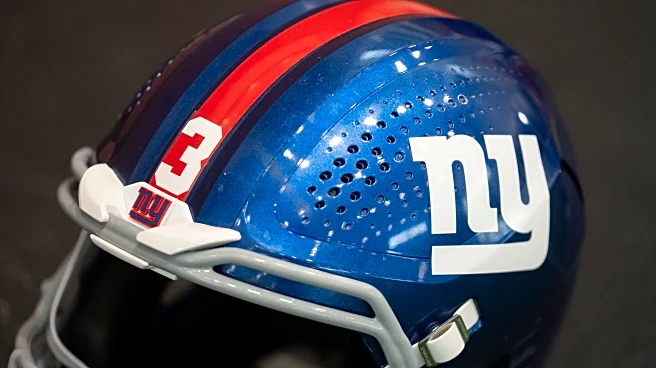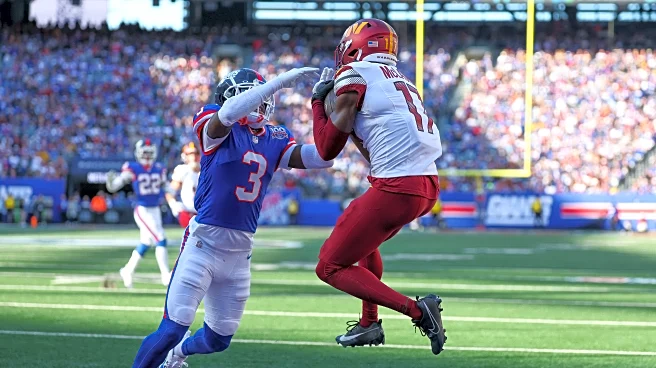
The New York Giants will travel to Northwest Stadium to take on the Washington Commanders in Week 1 of the 2025 NFL season.
That’s right, we have real, live, honest to goodness NFL football this week. So grab your Old Bay and a crab cake, because we’re heading to Maryland.
This is where the rubber meets the road for Brian Daboll, Mike Kafka, and the Giants’ franchise as a whole. The Giants fielded one of the worst offenses in football over the last two years, averaging 15.6 points per game in 2023
and 16.0 points per game in 2024. For some context, the NFL’s 17-game average was 21.7 points scored in 2023 and 23 points in 2024.
The Commanders, meanwhile fielded an average defense — They ranked 18th in points allowed (391, 23 per game), T-14th in yards per play allowed (5.4), and 15th in EPA/play allowed (0.020). They’ve added a few pieces since then, signing veteran edge rusher Von Miller in free agency, drafting Ole Miss cornerback Trey Amos in the second round, and getting veteran CB Marshon Lattimore back healthy after he struggled with a hamstring injury last year.
For their part, the Giants are hoping to take some significant steps forward in their offensive performance, and perhaps play with a more aggressive philosophy than they have in the past.
So what can we expect from the Giants’ offense when they have the ball?
The Giants’ wager
The Giants did make a point of upgrading the depth on their offensive line this past offseason — a definite weakness a year ago — but their only real change to the starting offense was at the quarterback position.
And that’s the Giants’ bet; that moving on from the triumvirate of Daniel Jones, Drew Lock, and Tommy DeVito to Russell Wilson would invigorate the offense.
We won’t know how, or how much, the Giants will change their offense with Wilson at quarterback. It’s probably safe to assume that the bones of the offense will remain in place, with the usual RPO and West Coast quick game concepts to keep the chains moving. The bigger question is whether the passing offense can stretch the defense, and that is where Wilson is expected to shine.
Wilson executed both quick-game passes and vertical passes well in the preseason. He quickly navigated the read progressions while also being decisive and accurate down the field. One of the big highlights of the preseason was Wilson’s 80-yard pass to Beaux Collins, a pass delivered on-time, in-rhythm, and accurately to a spot about 60-yards down the field. But even excepting that play, Wilson led the NFL in passes that traveled more than 10 yards in the air last year.
The Giants largely neglected the intermediate-deep area of the field last year and seem to be betting that a stronger vertical passing will open up the rest of their offense. The hope is that Wilson’s deep passing will play to the strengths of Darius Slayton and Jaylin Hyatt, as well as expand the playbook for Theo Johnson and Daniel Bellinger. Both of the Giants’ tight ends have uncommon speed for the position, and the Giants could look to use that speed to attack the seams in the Cover 3 schemes favored by Dan Quinn.
Discipline in protection
The first question brought up with regards to the Giants’ offense is, unsurprisingly, their offensive line.
The overarching issue is the uncertainty in Andrew Thomas’ health. He was activated off of the PUP list before final cutdowns and has been participating in practice. That said, we haven’t heard for sure (as of this writing) whether he’ll be able to start against the Commanders, and we don’t know how he’ll play after a significant injury and missing camp and the preseason.
If the offensive line can play to the same level they were at prior to Thomas’ injury, the protection should be fine in most cases. The question then becomes how well they deal with stunts, twists, and blitzes.
Dan Quinn’s defense heavily favored coverages with single-high safeties, with Cover-3 on 37.8% of snaps, and Cover-1 on 22.7 percent of snaps. A weakness of those coverages are the seams between the outside corners and the deep safety, however they also provide eight players at the first and second level as potential blitzers. And as it so happened, Washington was one of the NFL’s blitz-happiest defenses in 2024 and called a blitz on 34.3 percent of defensive snaps last year, fourth-most in the NFL. The Commanders also showed a propensity toward using stunts and twists to create free runs into the backfield, even doing so on third downs in the preseason.
The Giants will need their protection to play with discipline in order to give Russell Wilson the time to attack the vulnerable intermediate-deep area of the field. In particular, running backs and tight ends tasked with pass protection will need to be on-point with their assignments. Whether that’s stepping up to meet defenders in the hole and lose with dignity or delivering chip blocks that actually slow defenders’ rushes.
Likewise, linemen will need to communicate well and smoothly pass off slanting or looping defenders to avoid breakdowns up front. Likewise, unoccupied blockers will need to keep their heads on a swivel to pick up delayed rushers or offer help where they can.
Simply holding blocks is all well and good, but the Giants will need their blockers to play with discipline as well as sound technique to deal with Quinn’s schemed pressure.
Can the Giants pick on Trey Amos?
The presence of rookie cornerback Trey Amos stands out on the Commanders’ depth chart. He’ll be starting opposite Marshawn Lattimore, which could be significant for a couple reasons.
First and foremost, he’s a rookie and will likely be matched up against either Malik Nabers or Darius Slayton. And while Amos was experienced at the collegiate level and was one of the best corners in the SEC last year, he is still a rookie in his first real NFL action. He has good size and long speed, but has some hip stiffness as well as a tendency to either get grabby at the top of routes or give up unnecessary separation.
Secondly, the Giants may have insight into Amos’ tendencies thanks to backup quarterback Jaxson Dart who was his teammate last year. Dart both played with and practiced against Amos at Ole Miss, and could offer advice on how best to attack him. Conversely, if Washington rolls help Amos’ way it could create opportunities to isolate Lattimore in coverage-beating concepts on the other side.
It’s also worth noting — though perhaps not plan for — that Amos seemed to stick to one side of the field in the preseason. He played left cornerback against the New England Patriots, then right cornerback against the Baltimore Ravens. It remains to be seen whether Marshawn Lattimore will travel with receivers. If not, it could allow the Giants to isolate Amos or force preferable matchups down the field.
Play the numbers game
As it stands now, we don’t know how pass, or run, heavy the Giants’ offense will be in 2025. We can infer from how they renovated the quarterback room and leaned into deep-ball passers that they’ll want to throw more this year than in previous years, but we won’t know for sure until the games are played.
It may be a bit of a concern that the Giants struggled to run the ball in the preseason. They didn’t create much movement up front, or do so with any kind of consistency. The flip side of that is that Washington’s run defense was simply bad last year.
They were worse, in fact, than the Giants’ run defense by pretty much every metric. Washington gave up 4.8 yards per carry on 490 attempts (4th worst), and a total of -46.6 EPA (also 4th worst), compared to 4.6 YPC and -7.19 EPA for the Giants.
They will likely try to load the box against the Giants, leaning into their single-high coverage shells, until the Giants’ force them to play two deep safeties.
If so, that could present opportunities for explosive plays through the air, or for the Giants to find open the open field on the ground. We saw the Giants make excellent use of screen and running back checkdowns during the preseason. And while more complex coverage schemes will limit the effectiveness of those plays, that doesn’t change that they were well timed and executed. Likewise, we also saw the Giants be willing to use pulling linemen to change the blocking math on different sides of the formation.
A combination of box counts — simply counting how many defenders are in the tackle box to see if it’s light, neutral, or heavy — to determine whether to run or throw, as well as using pulling linemen could help the Giants find success on the ground. The Giants might not be able to simply drive their defense off the ball and create holes up front, but scheming a numbers advantage on the play side can put the Washington defense in a bad position. They struggled to get off blocks or tackle effectively in the pre-season, and forcing them to flow laterally was an effective tactic. Likewise, Dan Quinn has done a good job of coaching his players to swarm to the football, but that can be used against them with effective misdirection.
The Giants will likely want to be a pass-first offense, using (timely) vertical strikes to force the defense into light boxes. From there, a one-two punch of Tyrone Tracy (or Devin Singletary) and Cam Skattebo could put Washington into a “pick your poison” situation.
The good news is that we’ll soon start to get answers on what the Giants truly have planned for their offense, and whether they can exploit their opponents’ weaknesses.
